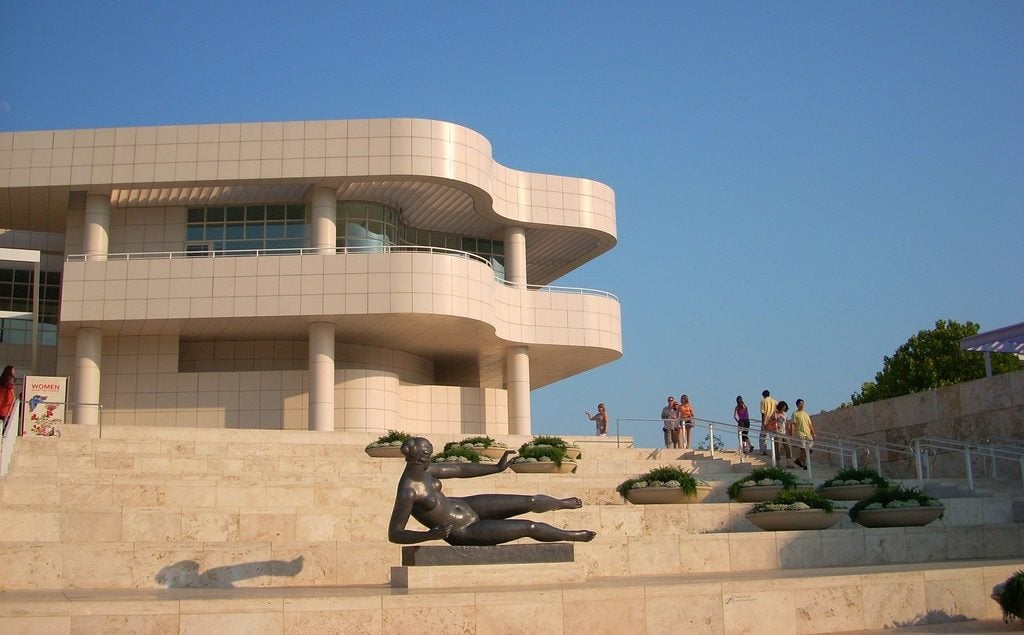Law & Politics
Swiss Antiquities Dealer Files $77 Million Suit Against Getty Museum
Is it possible to sue over a deal that never occurred?

Is it possible to sue over a deal that never occurred?

Eileen Kinsella

In an unusual move, Swiss dealer Phoenix Ancient Art has filed a federal lawsuit against the Los Angeles-based Getty Museum, Getty Trust, director Timothy Potts, and others, alleging misappropriation, fraud, breach of and interference with a contract and a prospective business relationship.
Phoenix is seeking $77 million in damages, claiming that through years of “hard work, professional judgement, and extensive knowledge regarding antiquities,” it devised a plan under which the Getty could acquire a collection of antiquities from the Torlonia family, who are private Italian collectors.
The Getty, it alleges,”stole the value of years of work and relationships cultivated” by Phoenix and related entities when it essentially cut them out of the negotiations, thus violating its contractual and legal duties, according to the complaint filed January 12 in US District Court, Southern District of New York.
Of note is the fact that the court papers do not actually state that a deal between the Getty and the Torlonia family ever occurred, instead specifying that Potts and another curator, Salvatore Settis, actively discussed “the possibility of exhibiting some of these wonderful works of art at the Getty.”
The direct communication is a violation of a “non-circumvention agreement” that Phoenix drew up and which the Getty agreed to in 2013, the court papers allege.
“The claims set forth in the lawsuit are baseless,” Ron Hartwig, vice president of communications at the J. Paul Getty Trust, told artnet News in an email. “The Getty was offered an opportunity to discuss a possible transfer of ownership of ancient sculptures in a private collection. The Getty declined the acquisition and the objects were later transferred to the Italian government. We do not understand how the transfer of ownership from an Italian family to the Italian government, which will display the collection in its many wonderful museums, is cause for a lawsuit against the Getty. Plaintiffs cannot plausibly demand payment for a deal that never occurred. While we believe that the complaint should be dismissed, if necessary we will vigorously defend our position.”
Amelia K. Brankov, an attorney and art law specialist who is not involved in this case, told artnet News: “While the allegations are unusual in that they are made against a museum, rather than a private collector, their thrust is the all-too familiar fear that strikes the heart of all art brokers—being iced [out] of a deal.”
The suit goes into detail about the Getty’s past problems with the Italian government over suspiciously sourced antiquities, noting that the Getty “has a history of legal troubles for allegedly dubious acquisitions,” and that the Italian government “claimed that 46 ancient artworks were looted and smuggled out of the country prior to being purchased by the Getty.” It also cites Italian authorities’ attempted prosecution of curator Marion True (charges were eventually dropped), and a California state attorney general civil investigation of the trust and spending by its then leader Barry Munitz in 2006.
Inexplicably, the suit also proffers personal information about J. Paul Getty himself, such as that he “earned billions of dollars after striking oil in the Neutral Zone between Saudi Arabia and Kuwait” and was the richest man in the US in 1957. And further: that his life was “tragic. [O]ne of [Getty’s] sons committed suicide, a daughter-in-law suffered a fatal heroin overdose, and a grandson was kidnapped and mutilated when J. Paul Getty refused to pay nearly $17 million in ransom.”
The suit also gives extensive background on the Torlonia family, “emigrants from France who arrived to make uniforms for the occupying Napoleonic army. . .and began to acquire great wealth in the 18th and 19th centuries through their administration of Vatican finances.”
The Torlonia collection, which includes roughly 620 Greek and Roman sculptures, among other rarities, was started by Giovanni Torlonia in the 1800s and consists of works that were unearthed on the family’s estates and used as security for defaulted loans, according to the court papers.
The 38-page complaint outlines efforts by Phoenix proprietors Hitcham and Ali Aboutaam to facilitate a deal that included international travel, “painstaking” cataloguing of the sculptures, developing trade secrets, cultivating relationships with Italian authorities, and attempting to find a buyer.
After signing a 2013 agreement under which it assented to terms that required it to receive and maintain confidential disclosures about the works in the Torlonia collection, the complaint alleges, Potts and the Getty eventually began “working without [Phoenix] to effectuate a sale or transfer” of the Torlonia sculptures.
The $77 million amount is derived from their expected commission on a deal they claim was valued at between $350 million and $550 million.